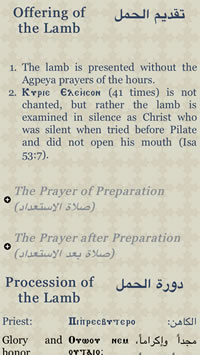

- WHICH TRANSLATION DOES THE COPTIC READER USE FULL
- WHICH TRANSLATION DOES THE COPTIC READER USE SERIES
The Septuagint (LXX), the very first translation of the Hebrew Bible into Greek, later became the accepted text of the Old Testament in the Christian church and the basis of its canon. 285–246 BC), who allegedly hired 72 Jewish scholars for the purpose, for which reason the translation is commonly known as the Septuagint (from the Latin septuaginta, "seventy"), a name which it gained in "the time of Augustine of Hippo" (354–430 AD). The Talmud ascribes the translation effort to Ptolemy II Philadelphus ( r.

History Ancient translations Aramaic Targums īy the 3rd century BC, Alexandria had become the center of Hellenistic Judaism, and during the 3rd to 2nd centuries BC translators compiled in Egypt a Koine Greek version of the Hebrew scriptures in several stages (completing the task by 132 BC). The punctuation was added later by other editors, according to their own understanding of the text. Karl Lachmann based his critical edition of 1831 on manuscripts dating from the 4th century and earlier, to argue that the Textus Receptus must be corrected according to these earlier texts.Įarly manuscripts of the Pauline epistles and other New Testament writings show no punctuation whatsoever. The discovery of older manuscripts which belong to the Alexandrian text-type, including the 4th-century Codex Vaticanus and Codex Sinaiticus, led scholars to revise their view about the original Greek text. Examples of major variants are the endings of Mark, the Pericope Adulteræ, the Comma Johanneum, and the Western version of Acts. Occasionally, a major variant happens when a portion of a text was missing or for other reasons. Most variants among the manuscripts are minor, such as alternative spelling, alternative word order, the presence or absence of an optional definite article ("the"), and so on. The three main textual traditions of the Greek New Testament are sometimes called the Alexandrian text-type, the Byzantine text-type, and the Western text-type. Scholars surmise the original Greek text from the manuscripts that do survive. The autographs, the Greek manuscripts written by the original authors, have not survived. The New Testament was written in Koine Greek. In antiquity, variant Hebrew readings existed, some of which have survived in the Samaritan Pentateuch and other ancient fragments, as well as being attested in ancient versions in other languages. This sometimes required the selection of an interpretation since some words differ only in their vowels their meaning can vary in accordance with the vowels chosen. The Masoretes also added vowel points (called niqqud) to the text, since the original text contained only consonants.
WHICH TRANSLATION DOES THE COPTIC READER USE SERIES
A series of highly similar texts eventually emerged, and any of these texts are known as Masoretic Texts (MT). From the 6th century to the 10th century AD, Jewish scholars, today known as Masoretes, compared the text of all known biblical manuscripts in an effort to create a unified, standardized text. The Hebrew Bible was mainly written in Biblical Hebrew, with some portions (notably in Daniel and Ezra) in Biblical Aramaic.

WHICH TRANSLATION DOES THE COPTIC READER USE FULL
As of September 2020 the full Bible has been translated into 704 languages, the New Testament has been translated into an additional 1,551 languages and Bible portions or stories into 1,160 other languages.

The Bible has been translated into many languages from the biblical languages of Hebrew, Aramaic and Greek. A man holding a sign in Thai persuading people to read the Bible at Sala Daeng BTS Station, Bangkok


 0 kommentar(er)
0 kommentar(er)
